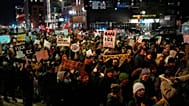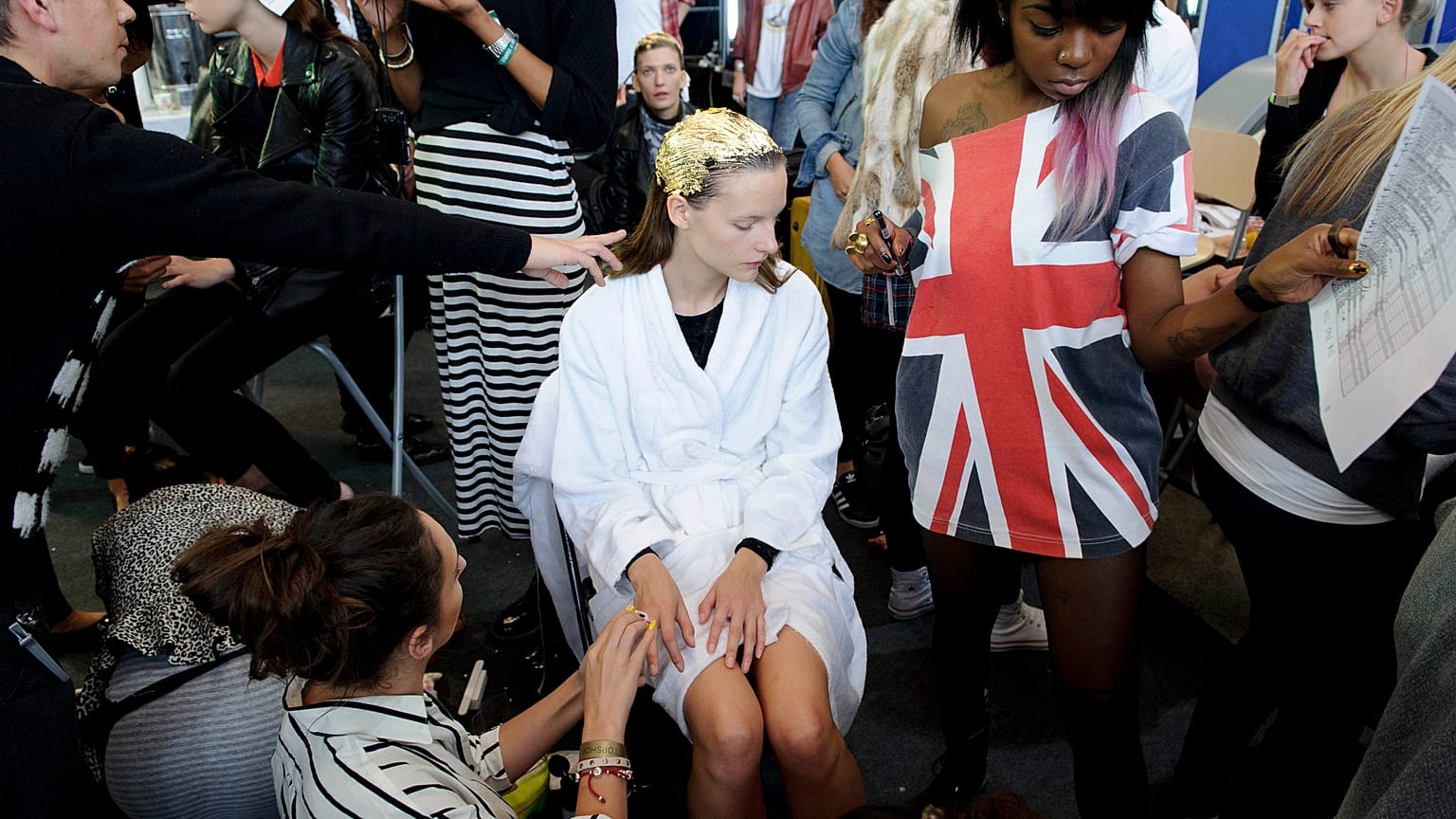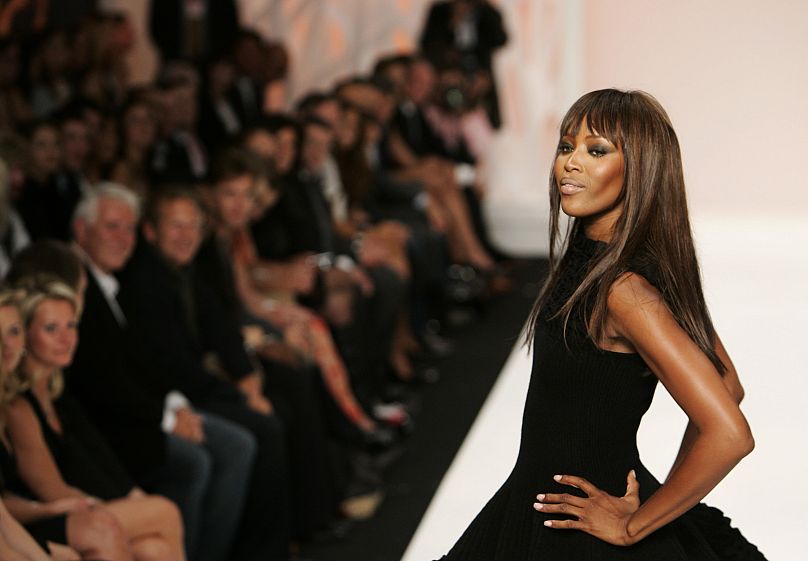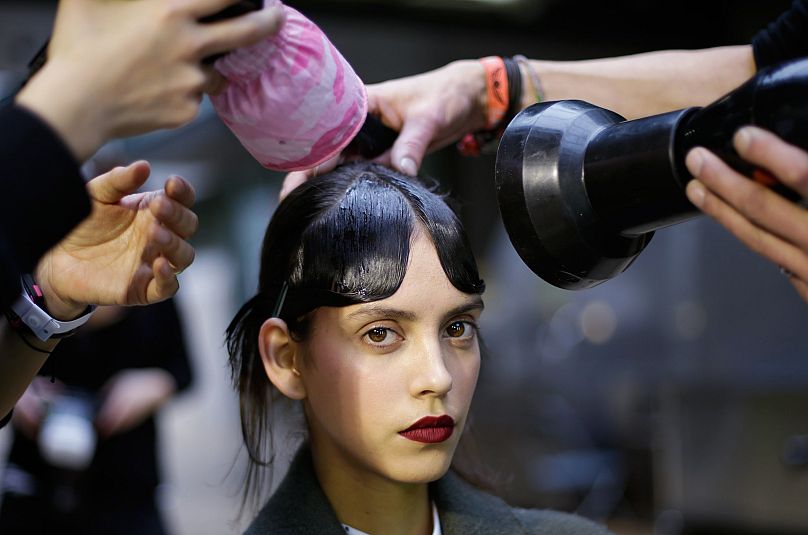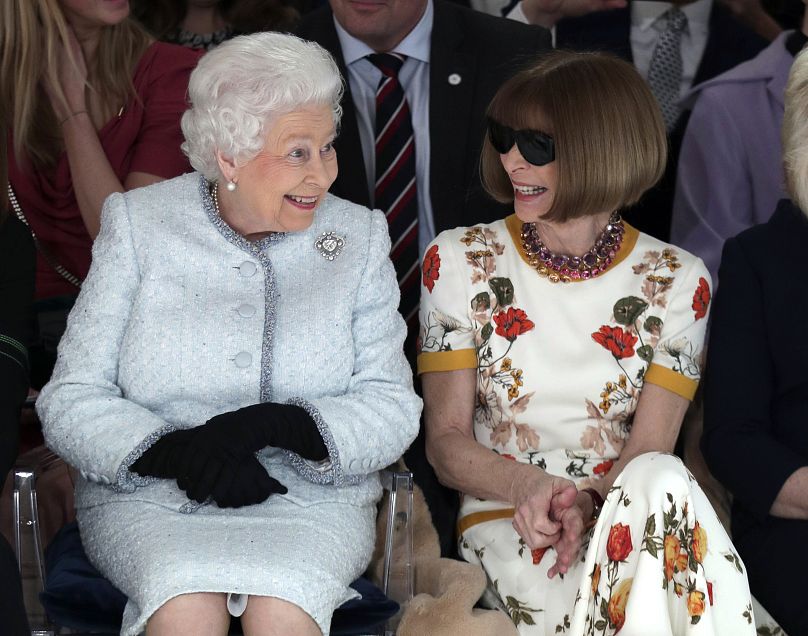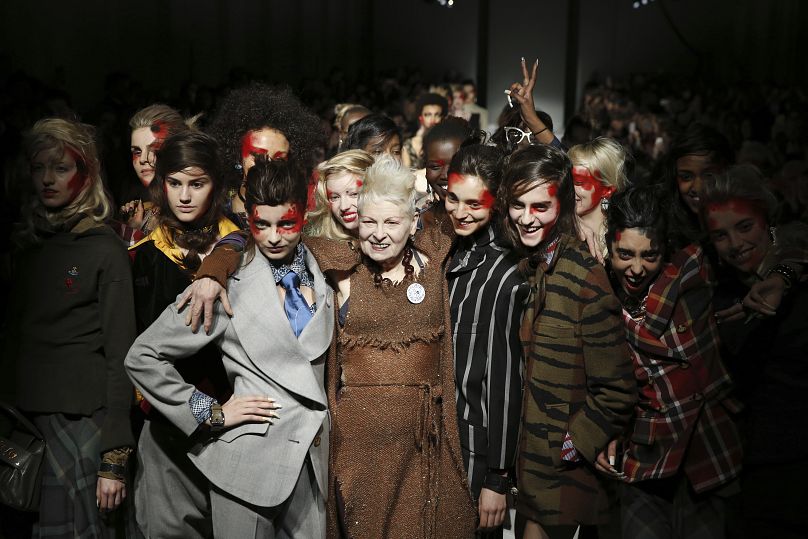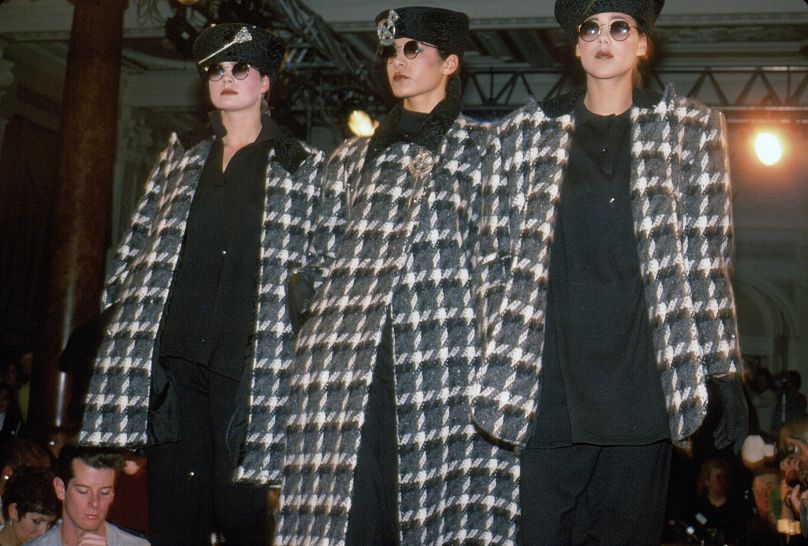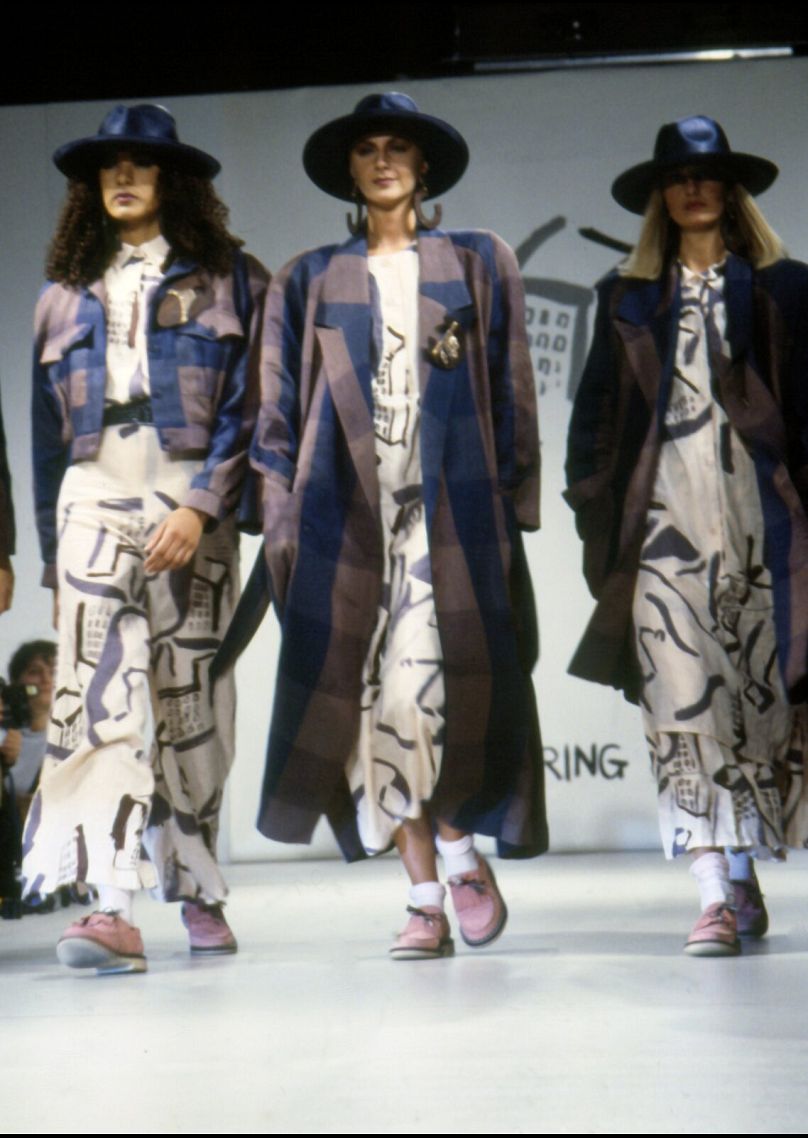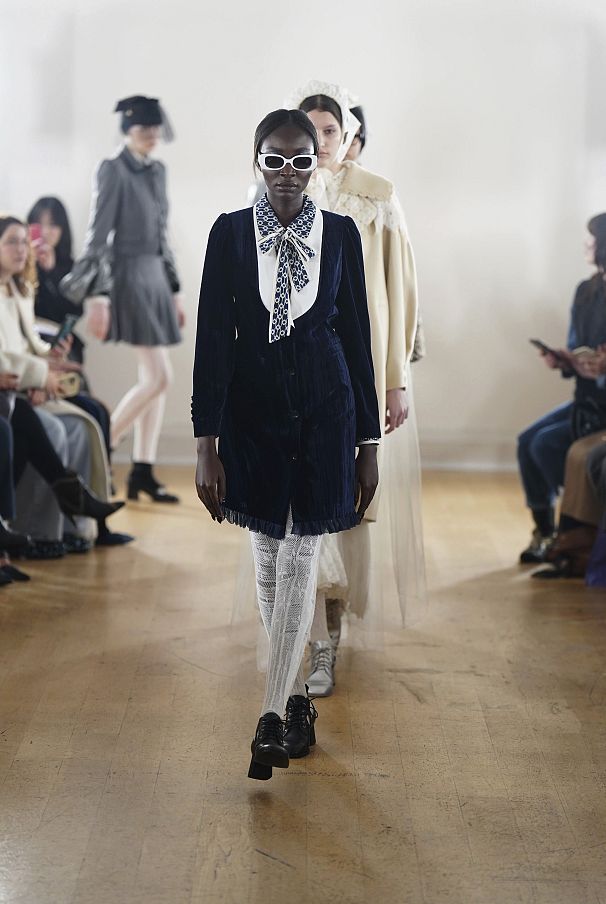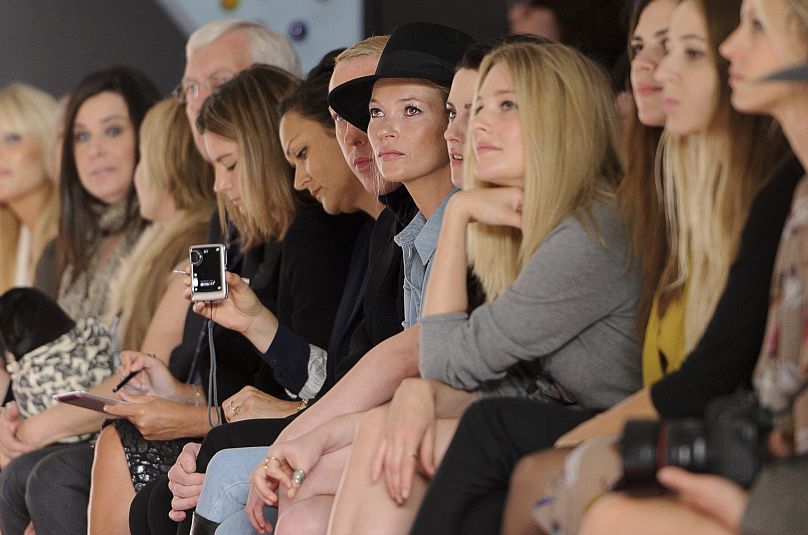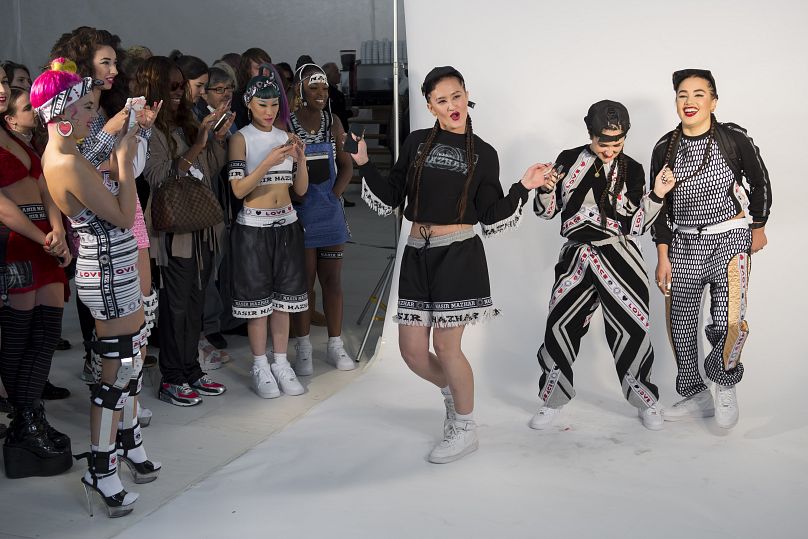In 1984, London Fashion Week was held in a car park in Kensington - 40 years on it is at the top of every fashionista's diary. We speak to the women behind this global sensation and also look at what has changed in the last four decades.
The first ever edition of London Fashion Week took place in a tent located in a Kensington car park in 1984 - with the newly-formed British Fashion Council hosting a brand new three-day event dedicated to British designers.
PR legend Lynne Franks - who founded her own agency at 21 years old - was one of the masterminds behind London Fashion week.
“The designers were young, fresh out of art college with huge dreams, they were big talents with very little backing,” Franks tells Euronews culture.
New York’s fashion week had been running since 1943, while Milan’s was launched in 1958 and Paris’ in 1973. London was in a sense playing catch up - but also being its own rebellious self - which meant doing things its own way.
“While designers in Italy and France were making huge amounts of money out of accessories, perfume and licensing, we weren’t there yet - a lot of British designers were making just enough money for their next collections”, explains Franks.
Fashion remains an essential part of the British economy today, with womenswear raking in around €37 billion (£31.9 billion) and menswear around €18 billion (£15.6 billion) in 2023.
Even Thatcher got in on the act
Lynne Franks’ persuasive skills led her to convince businessman Mohan Murjani to back the first edition of LFW. With a budget of approximately €23,000 (£20,000), her team set to work.
“We managed to pull together the event in about six months - that's from having the idea, to finding the right people, a venue and raising the money”, Franks tells Euronews Culture.
The first edition was a success and even the British establishment jumped on board. Conservative Prime Minister Margaret Thatcher held a reception for young designers at number 10 Downing Street.
A landmark moment for British fashion - but also a moment for a fashion statement - with designer Katherine Hamnett wearing a T-Shirt which donned an anti-nuclear missile message to meet Margaret Thatcher.
Despite this warm reception - with celebrities and members of the Royal Family beginning to attend shows and wear clothes by British designers - there was also hostility.
“The British press would write things that weren’t supportive of British designers and most of the criticism was based on the fact that they didn’t have the same sort of budget as European designers,” explains Franks. To remedy this, she launched a press committee with a team of journalists who would support British designers, with the help of former Vogue editor Liz Tilberis.
Reinventing itself
Although the woman behind it all - Lynne Franks - is no longer involved in London Fashion Week, she has had time to reflect upon it all. Forty years on from that first fashion week - she believes that only one thing is key to the survival of the event.
“Sustainability is not something I used to think about back then, it was about having fun and getting designers to stay in business. I have never said this to anyone before but I sometimes wonder how relevant fashion week is now - a lot of my focus now is on how we can renew things. Are so many collections necessary?”
The first designers
Betty Jackson - an acclaimed member of Britain's fashion royalty - participated in the first edition of London Fashion Week along with the likes of John Galliano.
Jackson had already begun to establish herself as a designer, incorporating artwork and prints into her collections, adding hats and flat shoes as accessories.
“For a long time London fashion and British designers weren't taken seriously. People used to come to London and take the ideas, but go off to Paris and Milan to spend the money. A lot of us young British designers, were new to the game and didn’t have massive industrial backers,” explains Jackson.
For Jackson, the 1980s and the advent of London Fashion Week marked a turning point. American investors were beginning to take more of an interest in young British designers - and they had some serious money to invest.
She recalls that first show in 1984, “it was absolutely packed, we were doing all of this before the internet, before mobile phones. So if you wanted to see what was happening, you had to be there.”
Jackson is still as enthusiastic about London Fashion Week, stating “they were exciting times. And it’s even more exciting now”.
When influencers took the front row seat at LFW
One of the big changes to LFW since its inception has been the advent of social media - which began to take off from 2010 onwards. The tight grip which fashion editors and journalists once had on setting trends and choosing which designers would be propelled to fame has weakened.
“Some of the exclusivity of London Fashion Week has broken down with digital media - but it also means that influencers have democratised fashion in a way," explains Caroline Stevenson, Programme Director of Fashion Studies at London College of Fashion UAL.
Having a wider range of people in the front row is a way to shake up the industry according to Stevenson, “if more people are coming to the show, it means there is a more diverse pool of people critiquing fashion and taking an interest in it. There’s going to be more pressure on the fashion industry to cater to these people,” analyses Stevenson.
Young British designers are moving abroad
During last season’s autumn/winter fashion week, a number of Britain’s hottest emerging designers - including SS Daley, Robyn Lynch and Dilara Findikoğlu - did not host catwalk shows. They cited the costs of putting on a show as a main factor weighing off this decision.
“London Fashion Week is becoming more and more professional, which creates the risk that we will miss out on talent because young people just can’t afford to participate. It’s too expensive for young designers to have experimentation spaces or to set up their own studios,” says Stevenson.
"Brexit has led to an increasing number of young people moving abroad, because of the cost of business and new trade laws which make things more complicated. They may train in London, but a lot of their businesses are abroad and they will come back just for LFW shows,” according to Stevenson.


